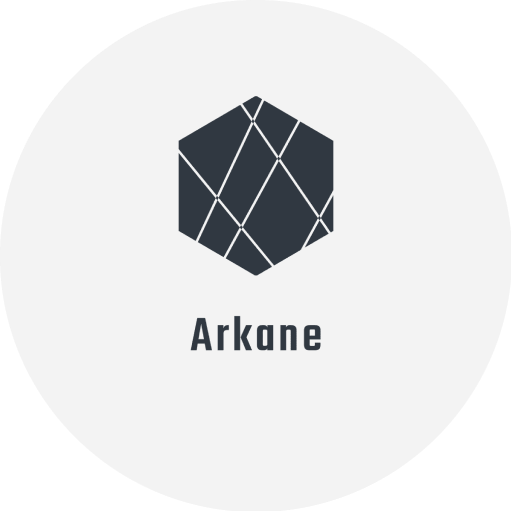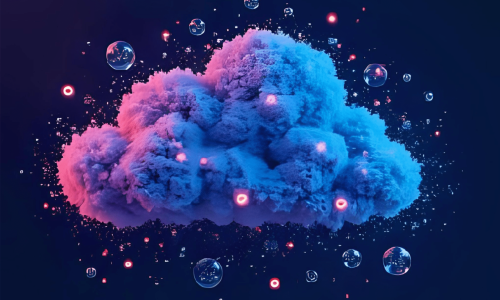
How to download Stable diffusion

Introduction
In the ever-evolving landscape of artificial intelligence (AI) and machine learning (ML), the emergence of Stable Diffusion stands as a remarkable milestone. This latent diffusion model, a type of deep generative artificial neural network, has opened new horizons in the realm of AI-driven creativity and practical applications. Developed by the researchers at the CompVis Group from Ludwig Maximilian University of Munich and Runway, and backed by Stability AI, this model presents an innovative approach to AI-generated imagery.
Unlike its predecessors, Stable Diffusion is not just another text-to-image model; it is a leap forward in the field of generative AI. It employs advanced diffusion techniques to produce images that are not only detailed but also photorealistic. This capability extends beyond mere image generation, allowing for inpainting, outpainting, and even the translation of images guided by text prompts.
The open-source nature of Stable Diffusion is a game-changer. It democratizes access to powerful AI tools, allowing a wider audience to experiment and innovate. Previously, such high-level machine learning models were the domain of major tech giants like OpenAI and Google. Now, Stable Diffusion breaks that mold, offering the same level of sophistication and capability to a broader range of users, including professionals, developers, and tech enthusiasts.
Running on modest consumer hardware equipped with a GPU of at least 4 GB VRAM, Stable Diffusion is not only powerful but also accessible. This accessibility is critical in an era where AI and machine learning are becoming integral to various industries. From creative arts to scientific research, the implications of such a tool are vast and varied.
As we delve deeper into the specifics of downloading and utilizing Stable Diffusion, it’s important to appreciate the technological marvel that it is. It represents a significant step forward in the journey of AI, opening doors to endless possibilities in digital creativity and beyond.
What is Stable Diffusion?
Stable Diffusion, a generative artificial intelligence (AI) model, marks a new era in creative digital technology. Its revolutionary approach to AI-generated imagery is changing the landscape of digital content creation. Launched in 2022, Stable Diffusion is rooted in diffusion technology and operates in latent space, allowing for the generation of unique, photorealistic images from text and image prompts. This capability extends far beyond static imagery; the model can also be used to create videos and animations, showcasing its versatility.
Delving into the specifics, Stable Diffusion comes in various forms, including SVD and SVD-XT models. These models can transform still images into videos with varying frame rates and resolutions. For instance, SVD transforms images into videos of 14 frames, while SVD-XT ups the frames to 24, both generating videos at speeds ranging from three to 30 frames per second. This flexibility opens up possibilities for use in various applications like advertising, entertainment, and education.
The introduction of Stable Diffusion XL (SDXL) represents a further advancement in this technology. SDXL enables the creation of descriptive images with shorter prompts, significantly enhancing image composition and aesthetics. This model stands out for its ability to generate images with improved composition and realistic aesthetics. Additionally, SDXL extends its capabilities beyond text-to-image prompting, offering inpainting (editing within an image), outpainting (extending the image beyond its original borders), and image-to-image prompting (using a sourced image to prompt a new image).
Stable Diffusion’s integration into Microsoft Azure’s AI model catalog is a testament to its growing importance. This integration provides data scientists and developers with robust text-to-image and inpainting models, which are key for creative content generation, design, and problem-solving. The models available in Azure AI’s catalog, including Stable-Diffusion-V1-4 and Stable-Diffusion-2-1, offer robustness and consistency in generating images from text, indicating the growing acceptance of Stable Diffusion in mainstream AI and ML applications.
System Requirements for Installing Stable Diffusion
Before diving into the world of Stable Diffusion, it’s crucial to understand the system requirements needed to run this sophisticated AI tool effectively. While Stable Diffusion’s system requirements are not as straightforward as typical applications, due to various versions available, there are certain key specifications that your system must meet to harness the full potential of this tool.
Hardware Requirements
-
Graphics Card: The heart of running Stable Diffusion lies in the graphics card. It’s recommended to use Nvidia graphics cards for optimal performance. Initially, Stable Diffusion required a Nvidia card with at least 10GB of VRAM. However, newer forks and iterations have allowed for a broader range of hardware. The minimum requirement is now a graphics card with at least 4GB of VRAM, although it’s advisable to have more for better results.
-
VRAM: The VRAM (Video RAM) of your GPU plays a significant role in the quality and size of the images you can generate. Stability AI, the creator of Stable Diffusion, recommends a minimum of 6GB of VRAM, but the more powerful the GPU (with higher VRAM), the better the performance and image quality.
-
Hard Drive: A minimum of 10GB of free space is required on your hard drive to install and run Stable Diffusion. Given the nature of AI-generated artwork, which can involve large file sizes, having ample storage space is essential. For optimal performance, having at least 100GB free space on your drive, or even investing in a sizeable SSD drive (500MB or more), is highly recommended to store your AI-generated content.
-
Memory (RAM): Stable Diffusion is resource-intensive, and having sufficient RAM is crucial. The minimum recommended RAM is 8GB, but for faster and more efficient processing, 16GB or more is advisable.
Software Requirements
-
Operating System: Stable Diffusion requires a high-end PC running either Windows or Linux. Although initially not supported on MacOS, there are now ways to run Stable Diffusion on M1 or M2 Macs, expanding its accessibility.
-
Python Installation: Python is a necessary component for running Stable Diffusion. The installation and setup process of Python is a fundamental step to prepare your system for running this AI tool effectively.
In summary, preparing your system for Stable Diffusion involves ensuring you have a capable Nvidia graphics card with adequate VRAM, sufficient hard drive space and RAM, and a compatible operating system with Python installed. These requirements may vary slightly depending on the specific fork of Stable Diffusion you choose to use.
Preparing Your PC for Stable Diffusion
Preparing your PC for Stable Diffusion involves not just meeting the minimum hardware and software requirements, but also optimizing your system for peak performance. This is especially crucial when you’re working with complex AI models like Stable Diffusion, which are resource-intensive and demand high computational power. Here are some strategies to optimize your PC for running Stable Diffusion efficiently:
Enhancing Performance with Cross-Attention Optimization
Stable Diffusion can be accelerated by enabling cross-attention optimization. Techniques like xFormers, developed by the Meta AI team, optimize attention operations and reduce memory usage, significantly boosting image generation performance. This optimization is crucial for handling complex AI operations with enhanced efficiency.
Managing Image Dimensions
The dimension of the images you generate with Stable Diffusion plays a crucial role in performance. High-resolution images demand more from your GPU and can slow down the process. Reducing image dimensions can notably speed up image generation, particularly if your GPU is less powerful. It’s a balancing act between image quality and generation speed.
Utilizing Token Merging
Token Merging is a technique that combines inconsequential or redundant tokens (words in positive & negative prompts) during image generation. This approach can speed up the process by reducing the computational load on your system. Careful adjustment of Token Merging values ensures that you don’t significantly alter the output image while still gaining performance benefits.
Adjusting Sampling Steps
Sampling steps determine how many iterations Stable Diffusion goes through to generate an image. More steps mean better quality but slower performance. Reducing sampling steps can accelerate image generation, but it’s important to find the sweet spot where image quality remains acceptable.
Ensuring GPU Utilization
Stable Diffusion’s performance can be hindered if it’s not properly configured to use your GPU. This can happen due to misconfiguration or installation errors. Ensuring that Stable Diffusion is utilizing your GPU instead of defaulting to the CPU is crucial for optimal performance. Checking GPU usage in Task Manager during image generation can confirm if the GPU is being utilized effectively.
Minimizing Background Processes
Running other applications or services while using Stable Diffusion can impede its performance. It’s advisable to disable unnecessary apps and services that consume RAM and processing power. This can be done through the Task Manager, where you can identify and shut down background processes that aren’t essential to your current task.
Reinstalling Stable Diffusion
If all else fails and Stable Diffusion is still underperforming, consider reinstalling the software. This can resolve any errors or misconfigurations that might have occurred during the initial installation. Reinstalling ensures that you’re running the latest version and can often lead to a noticeable improvement in performance.
By following these steps, you can optimize your PC to run Stable Diffusion effectively, thereby enhancing your ability to create high-quality AI-generated images and ensuring a smooth and efficient workflow.
Installing the Pre-Requisites: Git and Python
To successfully run Stable Diffusion on your PC, it is essential to first install certain prerequisites, notably Python and Git. These two are fundamental tools in the realms of machine learning and software development, and their proper setup is crucial for a smooth operation of Stable Diffusion.
Installing Python
Python is a versatile and widely-used programming language, particularly prevalent in machine learning applications. To install Python:
-
Download Python: Navigate to the official Python website and download the latest version of Python that is compatible with your operating system. It is crucial to ensure that the version you choose aligns with your system specifications for optimal performance.
-
Run the Installer: Follow the instructions provided by the installer. During the installation process, make sure to select the option to “Add Python to PATH.” This step integrates Python with your system’s command line interface, allowing for easy execution of Python commands and scripts.
-
Verify the Installation: To confirm that Python is installed correctly, open a command prompt or terminal window, type
python --version, and press enter. If the installation was successful, the version number of your Python installation should display on the screen.
Installing Git
Git is a version control system that is essential for managing software repositories, a key aspect in software development and machine learning projects.
-
Download Git: Visit the official Git website and download the Git installer for your operating system. Git is a critical tool for code management, especially when working with collaborative projects and version control.
-
Run the Git Installer: Follow the on-screen instructions to install Git on your system. This process usually involves a few simple steps and selections based on your preferences and system configurations.
-
Verify Git Installation: After installation, it’s important to verify that Git is installed correctly. Open a command prompt or terminal and type
git --version. The successful installation is confirmed if the version number of Git is displayed.
By carefully installing these prerequisites, you ensure that your system is well-prepared for running Stable Diffusion. Both Python and Git are not just tools for this specific task but are also essential skills and software in the broader field of software development and machine learning, making their installation beneficial beyond the scope of using Stable Diffusion.
Downloading and Installing Stable Diffusion 2.1
The process of installing the Stable Diffusion 2.1 model involves a series of steps that ensure the efficient utilization of this advanced AI tool. Following these steps meticulously will enable you to harness the full capabilities of Stable Diffusion for generating high-quality AI images.
Step 1: Install Stable Diffusion WebUI
Before downloading the Stable Diffusion 2.1 model, you need to have Stable Diffusion itself installed on your computer. There are various user interfaces (UIs) available for Stable Diffusion, such as Automatic1111 and ComfyUI, each offering a distinct set of features and user experiences. For a hassle-free installation, you can use the Stability Matrix, a one-click installer for Stable Diffusion that eliminates the need for command prompt operations.
Step 2: Download the Stable Diffusion 2.1 Model
After installing the WebUI, the next step is to download the Stable Diffusion 2.1 ckpt model. This model is available in two versions – the 2.1 Base model and the 2.1 model. The 2.1 Base model generates images with a default size of 512×512 pixels, whereas the 2.1 model is suitable for generating images of 768×768 pixels. The choice between these two depends on the capabilities of your computer and your requirements for image size:
-
For the 2.1 Base Model, download the model file (v2-1_512-ema-pruned.ckpt) and the corresponding configuration file from the links provided on HuggingFace and the Stability AI GitHub repository.
-
For the 2.1 Model, similarly, download the model file (v2-1_768-ema-pruned.ckpt) along with its configuration file.
After downloading, place these files in the directory stable-diffusion-webui/models/Stable-diffusion on your system.
Step 3: Integrate the Model with Stable Diffusion
Once the model and configuration files are downloaded and placed in the correct directory, you need to integrate them with the Stable Diffusion WebUI. This process varies slightly depending on the UI you have chosen, but generally involves selecting the downloaded model within the WebUI settings.
By following these steps, you can successfully install and set up the Stable Diffusion 2.1 model on your computer, preparing it to generate high-quality images based on your specific requirements.
Additional Settings and Customizations in Stable Diffusion
Stable Diffusion offers a range of settings and customizations that allow users to fine-tune the AI’s behavior and the quality of the generated images. Understanding and utilizing these parameters can significantly enhance the versatility and effectiveness of the model.
CFG Scale (Creativity vs. Prompt)
CFG Scale is essentially a control parameter balancing creativity and adherence to the prompt. Lower values on this scale give the AI more creative freedom, whereas higher values make it stick closely to the prompt. The default CFG scale is typically around 7, providing a balanced mix of creativity and fidelity to the prompt. Adjusting this parameter helps in tailoring the AI’s output to specific requirements, whether you need more creative interpretations or precise realizations of the provided prompts.
Seed
The concept of ‘seed’ in Stable Diffusion is crucial for determining the initial random noise that shapes the final image. Using the same seed with the same prompt will consistently generate the same image. This feature is particularly useful for replicating results or maintaining consistency across different image generations. It’s a powerful tool for users who require specific image features or styles to be repeated or compared.
Negative Prompt
Negative Prompt is an innovative feature in Stable Diffusion that guides the AI on what not to generate. This setting is particularly useful for avoiding undesired elements in the generated images. It’s a powerful tool for refining outputs, especially when used in conjunction with positive prompts, to achieve more precise and tailored results.
Steps
The ‘steps’ parameter controls the number of denoising steps the model goes through to create an image. More steps generally result in better image quality. The typical default setting is around 25 steps, but this can be adjusted based on specific requirements – lower for quicker, less detailed images, and higher for more detailed outputs, particularly in images with complex textures or elements.
Samplers
Samplers in Stable Diffusion are algorithms that guide the denoising process. They compare the generated image after each step to the text prompt and adjust the noise accordingly. Different samplers, like Euler A, DDIM, and DPM Solver++, have their own characteristics and can affect the quality and style of the final image. Experimenting with different samplers can lead to discovering the one that best fits your specific needs.
Img2img Parameters
The Img2img feature in Stable Diffusion allows you to use an existing image as a starting point, with the AI then modifying it based on the prompt. The ‘Strength of img2img’ parameter controls how much noise is added to the initial image, ranging from 0 (no noise, retaining the original image) to 1 (completely replacing the image with noise). This feature is particularly useful for creating variations of an existing image or changing its style while maintaining some of its original elements.
By mastering these settings and customizations, users can significantly expand the capabilities of Stable Diffusion, tailoring the AI to generate images that closely align with their creative vision and specific project requirements.
Newsletter
You Do Not Want to Miss Out!
Step into the Future of Model Deployment. Join Us and Stay Ahead of the Curve!

![The 4 Major Corporate Fears About AI [and How Arkane Crushes Them]](https://arkanecloud.com/wp-content/uploads/elementor/thumbs/image-fears-r83x02fmwkg0873grkx2f5jvdsy2k1b00h5jqz1vi0.png)



